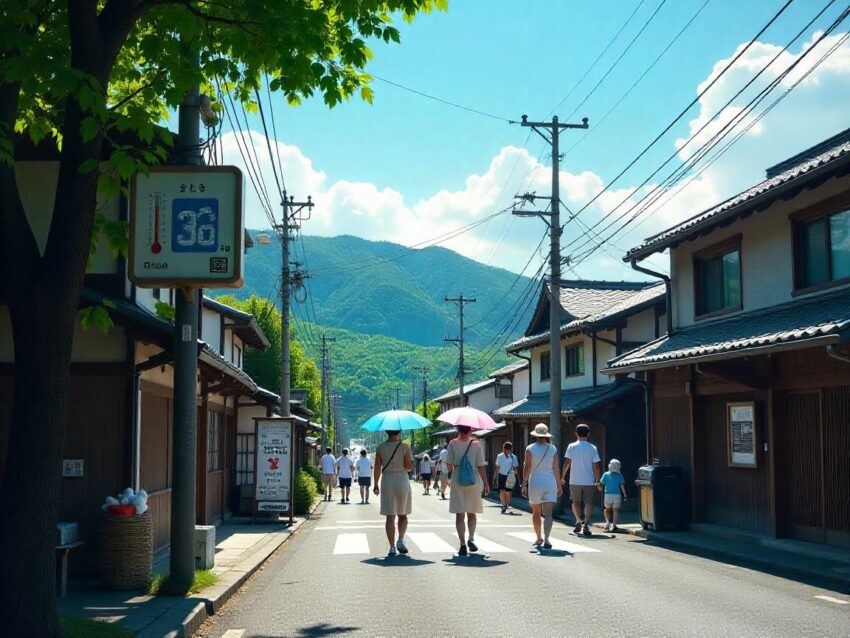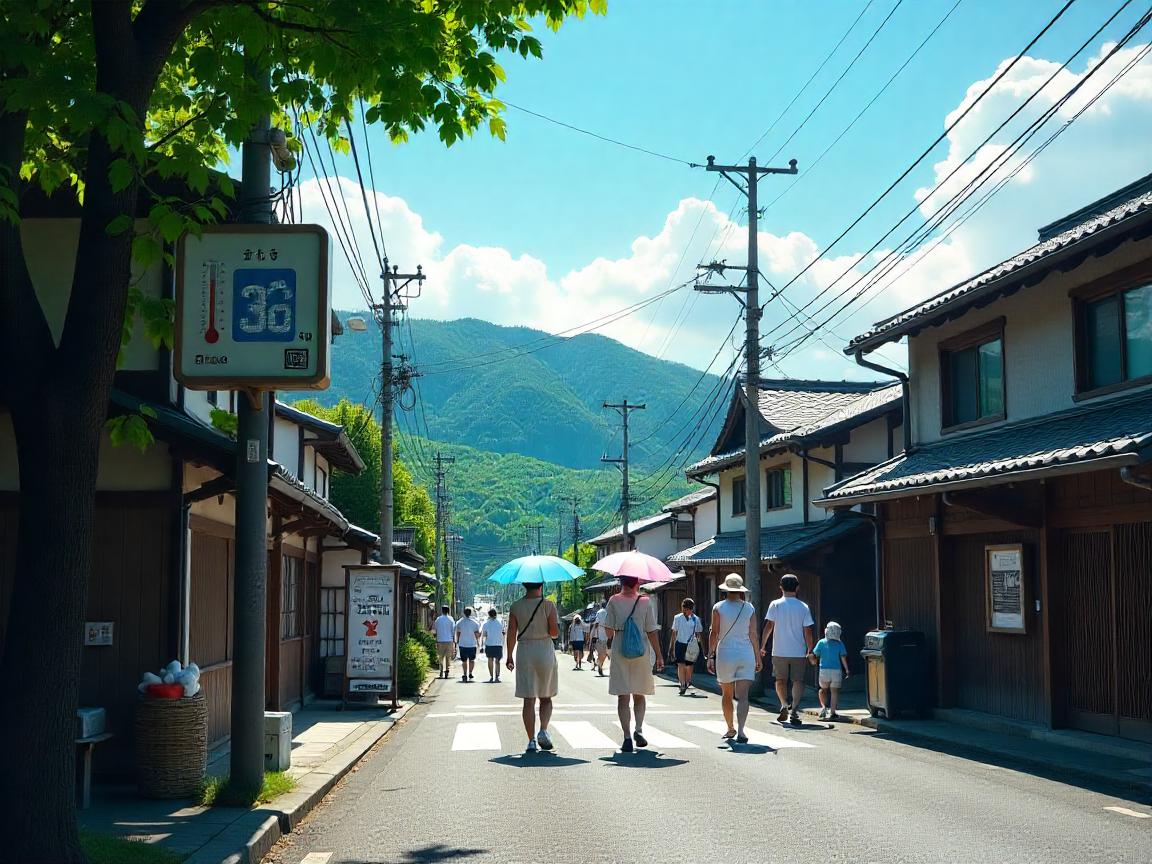Sunday, July 20, 2025

The end of the rainy season (tsuyu) was announced by the Japan Meteorological Agency (JMA) for Kanto–Koshin, Hokuriku, and southern Tohoku in 19 July 2025. The announcement was made days earlier than normal, effectively opening the floodgates for a protracted summer season. What this means for travellers is more sunshine over popular destinations. To scientists and policymakers, it is a sign of mounting evidence of changes in climate behavior.
A Tourist Magnet, But Not Without Risks
Those heading to Tokyo or on to Kanazawa or Sendai, say, are now more likely than ever to enjoy uninterrupted sunshine for sightseeing, hiking and outdoor festivals. The early withdrawal of the rain front makes the months perfect for activities such as climbing Mount Fuji or checking out Japan’s picturesque coastlines.
But this rosy forecast brings a caution. June 2025 was the hottest on record in Japan, with temperatures 2.34°C above the long-term average. Temperatures above 35°C have already been recorded in Tokyo, Kumagaya, and other cities.The skies may be clearer, but the heat is certainly fiercer, so ask travellers and residents to take extra care.
Climate Patterns Are Changing And Japan Is A Good Example
The JMA said the early termination of the season was due to a more powerful Pacific high-pressure system and the northward migration of westerly winds. The system caused it to rain earlier than average: the seasonal rain front moved north earlier than usual in Kanto (a day earlier than average), Hokuriku (5 days) and southern Tohoku (6 days).
A phenomenon that would have previously been considered an anomaly is now under consideration by scientists as part of a repeating pattern. Shortened rainy seasons, longer heat waves and more extreme temperatures are pointing to a change in the climate of the island nation and its becoming clearer that it is happening. These anomalies are not unique, they are reflective of global-scale climate projections that are generally calling for increased waviness in weather systems.
Record Heat And What The Data Show
Hard numbers back up this year’s temperature trends. The month saw 200 or more observation points around Japan mark temperatures of 35 degrees C or higher. Temperatures in Nerima Ward, a Tokyo suburb, reached 38.6°C, and Kumagaya hit 39.1°C, setting new highs for both, according to the Japan Meteorological Agency, and fueling fears about how much hotter summers will become in the future.
JMA officials said sturdy high-pressure systems combined with the dissipation of the usual rainy front to form a “heat dome” over large parts of Honshu and Kyushu, cranking up thermal stress on people and buildings.
Climbing Temperatures Push Japan Health Systems To The Brink
The impact of this sudden heating was immediate and catastrophic. In June 2025 alone, over 16,900 people were admitted to hospital with suspected heatstroke, the Fire and Disaster Management Agency said. This beat the previous record that was set in 2022. Only in the week ending June 22, some 8,600 people were admitted to hospitals, the majority of them being elderly.
Data like those drive the case for public health adaptation. From heat warning systems to cooling shelters, Japanese cities are scrambling to adapt — but the adjustments may not be coming fast enough to keep up with the pace of the crisis.
A mixed Outlook For Japan’s Tourism And Economy
And while the longer summer may boost tourism and the service industries —particularly outdoor attractions and regional travel economies — it also presents new problems. Electricity demands are likely surge as air conditioning becomes a necessity, raising questions about energy security and grid capacity. The costs of climate-proofing cooling systems and heat-resistant infrastructure are likely to soar.
The countryside and mountains, which count on tourism as an economic engine, are likely to feel a double-edged impact: more foot traffic, but also bigger bills in health, maintenance, and logistics.
An International Problem Requires Local Solutions
Japan”s shifting seasonal cycle is not just an issue at home – it’s part of a global trend. Recently, the World Meteorological Organization warned that global temperatures are on track to break records through the end of the decade. Countries like Japan are coming under increasing pressure to transition more quickly and more comprehensibly, weaving in heat and resilience at the national and the local level.
At the national and municipal levels, existing government-led initiatives include revised workplace safety standards, urban-level emergency plans, public shaded infrastructure design precepts. Such steps are vital, but far more robust adaptation frameworks will be necessary to make our way through an epoch of climatic instability.
What Travellers Need To Know This Summer
Things who’ve been planning a trip to Japan this summer best get ready!!! Try to plan activities for the early morning or late afternoon and to avoid arduous activity in the middle of the day. Water in abundance, breathable clothing, and places with working air conditioning are now just as much in demand as maps and translation apps. Travel insurance should cover heat-related illness, and guests are reminded to pay close what the JMA and local authorities are saying in weather announcements.
The beauty of Japan’s summer is as strong as ever, but travellers must learn to adjust to the new cadence of the season: a scenic clarity undone, and warped, by its own climatic excess.
Conclusion: A New Summer Reality
The end of Japan’s rainy season is usually the start of summer festivals, fireworks and mountain treks. But 2025 also bristles with a new climate reality. Even as the travel window has widened and there are plenty of economic opportunities, the heat brings with it urgent health and infrastructure challenges.
A message for tourists is clear: Enjoy Japan’s summer beauty, but be prepared. But the lesson is no less obvious for governments, scientists and businesses — adaptation is no longer optional.

